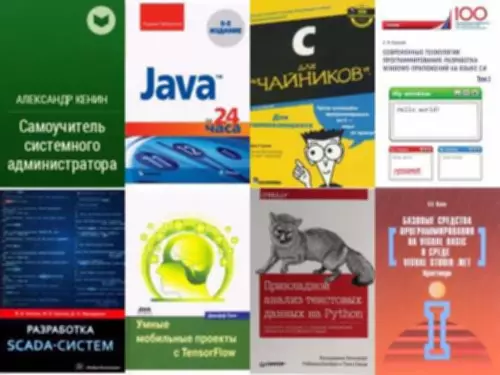02 Οκτ Ef Core Overview Be Taught What’s Ef Core And Why You Want To Use It
With its simple API, cross-platform support, and rich options, it’s a fantastic alternative for contemporary purposes. By following the best practices in this information, you’ll construct maintainable, scalable, and efficient information access layers. Entity Framework Core (EF Core) is a modern, open-source, and cross-platform object-relational mapper (ORM) for .NET. It abstracts database interactions, permitting builders to work with databases utilizing .NET objects instead of writing raw SQL. This makes development faster, code cleaner, and applications more maintainable.This in-depth information is written for novices, with sensible examples, greatest practices, and step-by-step explanations.

This choice will enable us to address topics like migrations and the Code First method, which we are going to focus on intimately later. The DbSet represents a set of objects of a selected sort, and it provides a set of methods for querying and manipulating data. With your DbContext and database models in place, now you can begin querying and modifying data using Entity Framework Core. EF Core helps LINQ (Language Integrated Query) to retrieve data from the database. LINQ lets you write database queries in C# using acquainted syntax, and EF Core interprets these LINQ queries into the suitable SQL statements for the database. This abstraction simplifies the development process by eliminating the necessity to write uncooked SQL queries.
This device connects to various data sources using Devart’s dotConnect and open-source data providers. With EDM in place, Entity Framework allows CRUD operations (Create, Read, Replace, Delete). It translates LINQ to Entities queries into SQL commands for relational databases, ensuring environment friendly interactions. You begin by creating a database with all the mandatory tables and elements. Entity Framework generates area courses using the Scaffold-DbContext console command. This technique is usually utilized by builders who prioritize database design.
Articleadodotnetandefcore

EF Core is usually used in .NET functions the place developers need to deal with database operations in an object-oriented manner, abstracting much of the complexity of working immediately with SQL. Every provider is a solution that interprets the instructions from EF Core into database-specific SQL and handles communication. One of the popular examples of such information providers is the Devart dotConnect product line. The Appliance layer contains the enterprise logic and UI/API code that makes use of EF Core to carry out CRUD (Create, Read, Update, Delete) operations on the database.
Querying Information: Linq And Relationships
- At first, it may appear confusing, but once you get the hold of it, it is a game-changer.
- Lastly, EF Core supports database migrations, which suggests you could easily change your database schema over time as your utility evolves.
- The ORM’s code-first approach allows for straightforward modification of database schemas as business requirements change.
- It Is open-source, so you have obtained a whole community of developers contributing to it and making it higher on a daily basis.
- Entity Framework Core, like Entity Framework, permits fetching knowledge from a plethora of knowledge sources.
Nonetheless, because the https://deveducation.com/ area model grows, the quantity of code required can grow and can want more and more growth time to take care of. This will improve the overall amount of time required to complete an utility. Utilizing these two easy commands, all of the entities of our tables with their corresponding relationships shall be created, and additionally, the DbContext class shall be generated.
LINQ (Language Built-in Query) is a powerful function in C# that allows you to write queries in a more intuitive method. It’s like speaking a language you already know, quite than studying a new one. That Is just a fancy means of claiming it translates your C# code into SQL queries that your database can understand. It’s like having a translator that speaks each your language and the database’s language. We will provide a hands-on approach to the subject with step-by-step program examples that may help you in studying and placing the acquired knowledge into apply.
Entity Framework Core, or EF Core, is a robust Object-Relational Mapping (ORM) tool developed by Microsoft for interacting with the database within .NET applications. Entity Framework Core (EF Core) is an ORM (Object-Relational Mapping) framework for the .NET platform. By Way Of the course, you’ll study all about Entity Framework, what it’s, the means it works, the means to use it for knowledge entry when growing .NET apps, what are its out there workflows and their pros and cons.
Update An Entity
Scaffolding is a reverse engineering approach that allows us to create entity courses and a DbContext based mostly on the schema of a database. To modify data, you’ll have the ability to create new cases of your database fashions and add them to the DbSet. When you call SaveChanges on the DbContext, Entity Framework Core will mechanically generate the mandatory SQL instructions to insert or replace the information in the database. There are several benefits to using EF Core in your .NET Core functions. First, it simplifies database access by abstracting away the low-level details of ADO.NET and SQL. You can concentrate on writing business logic quite than database access code.
Streamline Your Net Initiatives With Feature-rich AdoInternet Suppliers
You know, like having a personal assistant who handles all of the boring stuff for you. In The Meantime, EF Core is part of the .NET ecosystem, which means it integrates nicely with other .NET instruments and libraries. It Is open-source, so you’ve got obtained an entire neighborhood of builders contributing to it and making it better all the time.
Some individuals prefer to write down all queries (Dapper) and some individuals choose to work with LINQ (EF Core). This Entity Framework Core (EF Core) Tutorial series will cowl many of the ideas associated to Entity Framework. We will start with the basics and end with essentially the most advanced and new options provided by EF Core. In this text, I will briefly introduce the Entity Framework Core and focus on the following tips. Entity Framework (EF) Core, can be used with .NET Core purposes, but also with .NET 4.5 (or later) functions and yow will discover its newest launch here.
Developers can construct applications focusing much less on database tables and columns while writing less code. Entity Framework Core (EF Core) is a modern Object-Relational Mapping (ORM) framework designed to simplify database interactions in .NET applications. With EF Core, developers can work with knowledge using familiar C# courses and objects, eliminating the necessity to write advanced SQL queries. Whether you are constructing a new application or integrating with an current database, EF Core presents highly effective instruments to streamline your workflow. Entity Framework Core is an Object-Relational Mapping (ORM) framework that enables what is entity framework in asp.net .NET Core builders to work with relational databases using object-oriented concepts.




No Comments